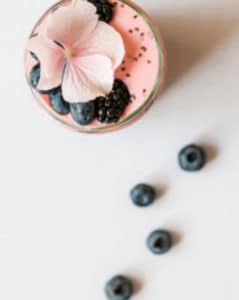Skin-Deep: Uncovering the Role of Nutrition in Acne
Acne doesn’t just affect the skin. It can impact confidence, mood, and daily life. For many people, breakouts are more than a surface-level frustration; they’re a sign of deeper imbalances influenced by hormones, inflammation, stress, and, yes, nutrition.
For years, conventional wisdom dismissed the connection between diet and acne. Today, growing research paints a different picture. What we eat can influence hormones, inflammation, and the microbiome….all of which play a role in how our skin looks and feels. The good news: nutrition offers a powerful, evidence-based way to support clearer, healthier skin from the inside out.
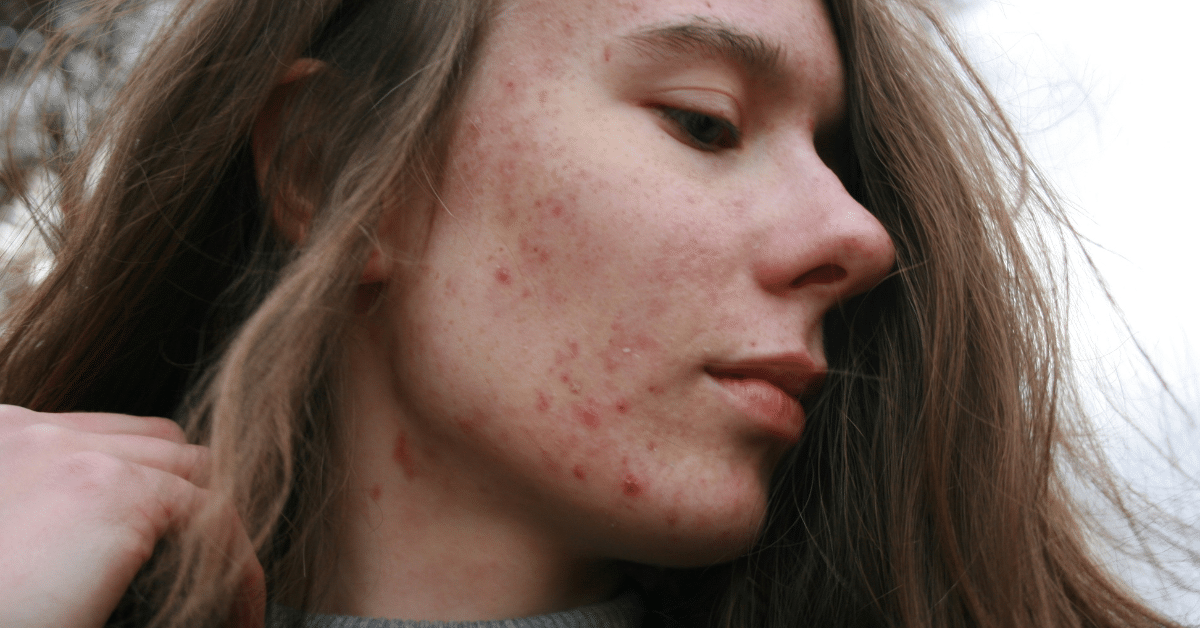
The Inner Workings: What Drives Acne?
Acne occurs when pores (hair follicles) become clogged with excess oil and dead skin cells. This environment allows Cutibacterium acnes bacteria to grow, triggering inflammation that leads to pimples, blackheads, and whiteheads.
Key players in causing, aggravating, and prolonging acne:
- Hormonal changes during puberty, menstruation, pregnancy, or perimenopause
- Stress raises cortisol and inflammation
- Certain drugs, including steroids, testosterone, lithium, and some anticonvulsants
- Genetics may influence sebum production and skin sensitivity
- Environmental exposures such as air pollution, chloracne (from dioxin exposure), mineral oils, and halogenated hydrocarbons
- Endocrine-disrupting chemicals (EDCs) such as bisphenol A and phthalates
- Lifestyle and dietary factors, including high glycemic diets, excessive dairy intake, and obesity
Even with balanced hormones and good skincare, acne can persist, often because underlying metabolic and inflammatory factors, such as diet, are contributing behind the scenes.
How Diet Influences Acne
The link between nutrition and skin health is complex, but research highlights a few clear patterns. Certain foods can spike blood sugar, trigger inflammation, or alter hormones in ways that make acne worse. Others can calm inflammation, balance hormones, and nourish the skin barrier.
Let’s break it down.
1. Blood Sugar and Insulin
High-glycemic foods, those that quickly raise blood sugar, can trigger insulin surges and increase levels of insulin-like growth factor 1 (IGF-1). IGF-1 stimulates sebum (oil) production and skin cell growth, leading to clogged pores and inflammation.
Foods that spike blood sugar: white bread, sugary cereals, soda, pastries, candy, and ultra-processed snacks.
Better options: fruits, vegetables, legumes, steel-cut oats, brown rice, quinoa, and whole-grain pasta.
A low-glycemic eating pattern helps stabilize hormones, reduce inflammation, and support more even energy (and mood).

2. Dairy’s Role
Cow’s milk, especially skim milk, has been linked in several studies to acne. Milk naturally contains hormones and hormone precursors that can elevate IGF-1 levels in the body. Casein and whey proteins also stimulate insulin release, which can worsen breakouts for some.
This doesn’t mean everyone needs to go dairy-free. But if acne persists despite other efforts, consider a 4–6 week dairy elimination trial, replacing cow’s milk with unsweetened almond, oat, or soy milk to see if skin clarity improves.
Whey protein powders, in particular, have been tied to acne flare-ups….so if you’re using one, that might be worth revisiting.
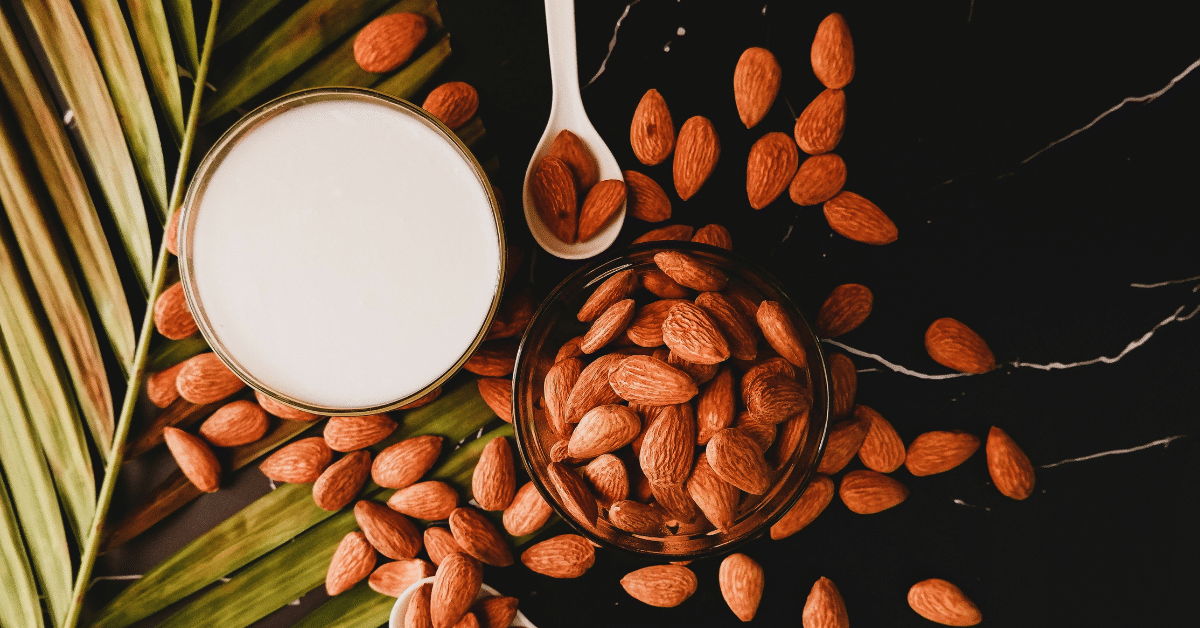
3. Fats and Inflammation
The types of fats you eat matter. Saturated and trans fats found in fried foods, processed snacks, and fast food can raise inflammation throughout the body, including in the skin.
By contrast, omega-3 fats (found in salmon, walnuts, flaxseeds, chia seeds, and sardines) are naturally anti-inflammatory and can reduce acne severity in some individuals.
Balancing omega-6 (common in vegetable oils) and omega-3 intake helps keep inflammation in check and supports a calmer, more resilient complexion.

4. The Gut–Skin Connection
Have you ever heard the saying “your skin is a reflection of your gut”? That’s because modern science is catching up to what holistic health practitioners have long observed: the gut–skin axis. This is the bidirectional communication network between your digestive system and your skin, linking the microbiome, immune system, and nervous system.
An imbalanced gut microbiome (known as dysbiosis) can contribute to skin concerns through several key mechanisms:
- Inflammation: When the gut microbiome is out of balance, it can trigger low-grade systemic inflammation. On the skin, this often shows up as acne, eczema, rosacea, or psoriasis flare-ups.
- Leaky Gut: When the intestinal barrier becomes more permeable, toxins and undigested food particles can enter the bloodstream. The immune system reacts, and inflammation may appear on the skin as redness, irritation, or blemishes.
- Nutrient Absorption: A healthy gut supports the absorption of vitamins and minerals essential for skin repair and radiance – particularly vitamins A, C, and E, zinc, and omega-3 fats. Poor absorption means your skin may not get the nourishment it needs to stay clear and resilient.
Supporting gut health, therefore, becomes a cornerstone of skin care from the inside out.
Try incorporating gut-friendly foods daily:
- Probiotics (live beneficial bacteria) from yogurt with live cultures, kefir, kimchi, and sauerkraut.
- Prebiotics (the “food” for those good bacteria) found in onions, garlic, leeks, bananas, oats, and asparagus.
- High-fiber foods such as legumes, whole grains, fruits, and vegetables to keep digestion regular and feed healthy microbes.
A balanced gut microbiome not only supports clear skin but also enhances mood, energy, and immunity, showing just how interconnected the whole body truly is. Think of gut care as skin care from the inside.
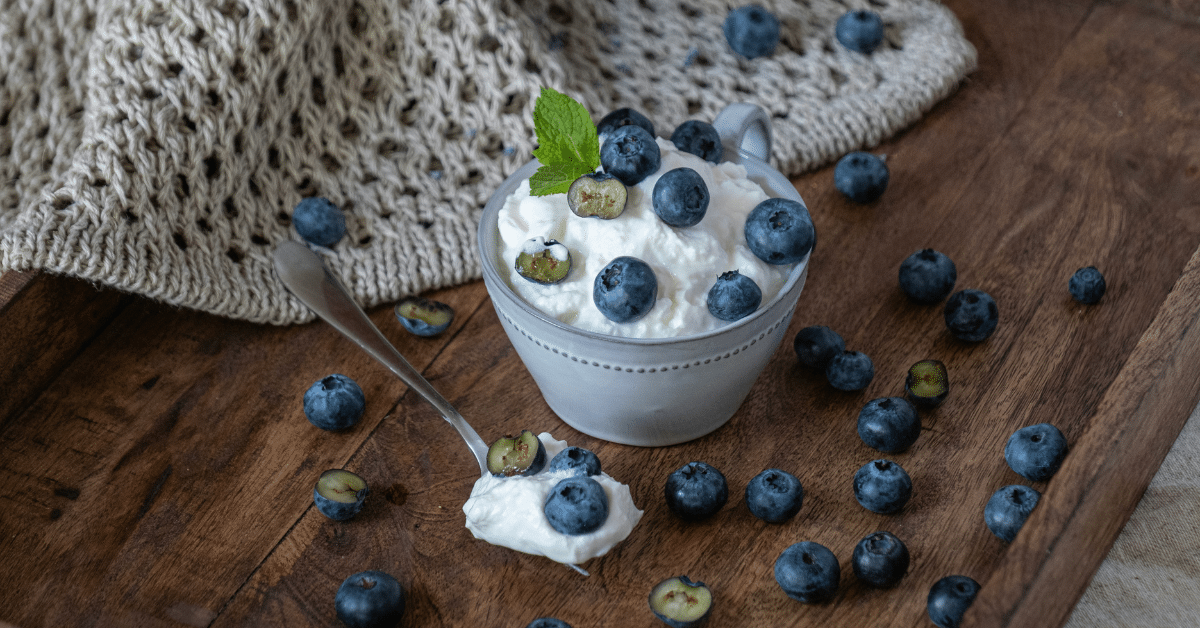
5. Key Vitamins and Minerals for Clear Skin
Certain micronutrients play critical roles in skin health and inflammation control:
- Vitamin A: Regulates skin cell turnover and has anti-inflammatory effects (found in eggs, carrots, sweet potatoes, and leafy greens).
- Vitamin C: Antioxidant that supports collagen and wound healing (citrus, bell peppers, strawberries).
- Vitamin D: Helps regulate sebum and inflammation; low levels are common in acne (fatty fish, fortified milks, safe sun exposure).
- Vitamin E: Antioxidant that protects skin cells from oxidative stress (nuts, seeds, avocados).
- B Vitamins: Support energy metabolism and skin barrier function (whole grains, eggs, legumes). Note: very high B12 doses may worsen acne in some people.
- Zinc: Anti-inflammatory and antibacterial; low levels are common in acne (seafood, beef, pumpkin seeds, lentils).
- Selenium: Antioxidant that helps regulate sebum (Brazil nuts, fish, eggs, whole grains).

Foods to Consider Limiting
- High-Glycemic Foods: White bread, pasta, sugary drinks, candy, baked goods, and refined cereals.
- Dairy (especially skim milk): Try non-dairy alternatives if acne persists.
- Saturated and Trans Fats: Fried foods, processed meats, and margarine.
- Chocolate: Some people notice flare-ups, possibly due to sugar or certain cocoa compounds.
- Alcohol: Can dehydrate, raise inflammation, and disrupt hormones.
- Salty Foods: High sodium intake has been linked to breakouts in some studies.

Foods That May Support Clearer Skin
- Low-Glycemic Carbs: Fruits, vegetables, legumes, oats, quinoa, and sweet potatoes.
- Fiber-Rich Foods: Beans, lentils, and whole grains are great for gut and blood sugar balance.
- Healthy Fats: Salmon, mackerel, walnuts, chia, flax, and olive oil.
- Antioxidant-Rich Choices: Berries, spinach, kale, green tea.
- Probiotics: Yogurt (with live cultures), kefir, kimchi, sauerkraut.
- Prebiotics: Garlic, onions, leeks, bananas, asparagus.
- Lean Proteins: Fish, poultry, tofu, and legumes for repair and balance.
Practical Steps to Start
Small changes can make a big difference over time.
- Track patterns: Keep a food and skin diary for 3 – 4 weeks to spot connections.
- Prioritize low-GI swaps: Choose whole grains and fresh fruit over refined snacks.
- Incorporate healthy fats daily: Add flaxseed or avocado to meals.
- Limit dairy if needed: Try almond, oat, or soy milk for a few weeks and reassess.
- Support your gut: Add one probiotic food daily and a prebiotic vegetable.
- Hydrate well: Skin thrives when hydrated. Aim for 6-8 glasses of water per day.
- Stay consistent: Skin turnover takes time; most people see changes after 6-8 weeks.

Quick Wins for Clearer Skin
- Swap one high-sugar snack for fruit + nuts.
- Add one serving of omega-3 fats (fish or seeds) this week.
- Try non-dairy milk in your morning coffee.
- Add one fermented food (like yogurt or sauerkraut) daily.
- Drink an extra glass of water at lunch and dinner.
- Breathe….stress reduction counts too!
The Benefits of a Low-Inflammatory Eating Pattern
The Mediterranean-style diet naturally checks many acne-related boxes: low glycemic load, high in fiber, rich in antioxidants, omega-3s, and lean proteins. It supports hormone balance, gut health, and reduced inflammation….three major drivers of acne.
It’s not about perfection. It’s about building meals that keep your body (and skin) balanced from the inside out.
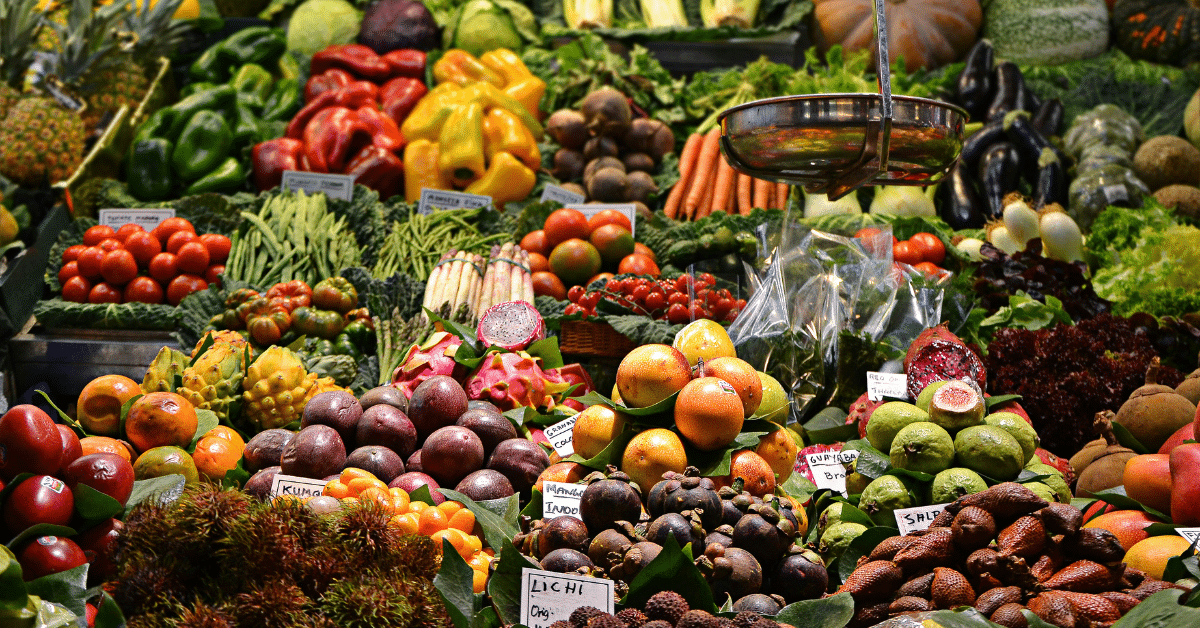
Working with a Registered Dietitian
A registered dietitian can help you:
- Identify your personal food triggers
- Assess nutrient status
- Create a sustainable eating plan for skin and hormone balance
- Integrate nutrition changes with your dermatologist’s care plan
There’s no one-size-fits-all acne diet. Personalized guidance can make all the difference.
The Takeaway
Acne is more than skin-deep. It reflects the body’s internal balance of hormones, inflammation, and nutrition. The science is clear: dietary choices can either fuel breakouts or support healing.
By emphasizing whole, low-glycemic foods, healthy fats, fiber, and gut-friendly nutrients, you can nurture clearer skin and stronger overall health.
You don’t have to figure it out alone, personalized nutrition guidance can help you uncover your skin’s best potential.
Book a Nutrition Consult today to start building a sustainable, skin-supportive plan tailored to you.
Medical Disclaimer:
The information provided on this blog is for educational and informational purposes only and is not intended as a substitute for medical advice, diagnosis, or treatment. Always consult with a qualified healthcare provider, such as your physician, pediatrician, or a registered dietitian, before making any changes to your or your child’s diet, health routine, or treatment plan.
While we are a medical practice specializing in integrative and functional nutrition, the content shared here reflects general knowledge and holistic guidance, and may not be appropriate for every individual. Reliance on any information provided on this site is solely at your own risk.
References
(Full citations preserved for clinical integrity.)
- Acne. Mayo Clinic. 2024.
- Kostecka M, et al. Nutrients. 2022;14(24):5293.
- Penso L, et al. JAMA Dermatol. 2020;156(8):854–862.
- Ryguła I, et al. Nutrients. 2024;16(10):1476.
- Sinha S, Lin G, Ferenczi K. Clin Dermatol. 2021;39(5):829–839.
- Podgórska A, et al. Healthcare (Basel). 2021;9(6):668.
- Guertler A, et al. Nutrients. 2023;15(20):4405.
- Sompochpruetikul K, et al. J Dermatol. 2024;51(7):1022–1025.
- Daszkiewicz M, et al. Foods. 2024;13(13):1993.
- Borrego-Ruiz A, Borrego JJ. Nutrients. 2024;16(20):3559.
- Taha S, et al. J Health Popul Nutr. 2024;43(1):41.
- Joshi M, et al. Pharmacol Rep. 2023;75(5):1096–1114.


